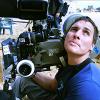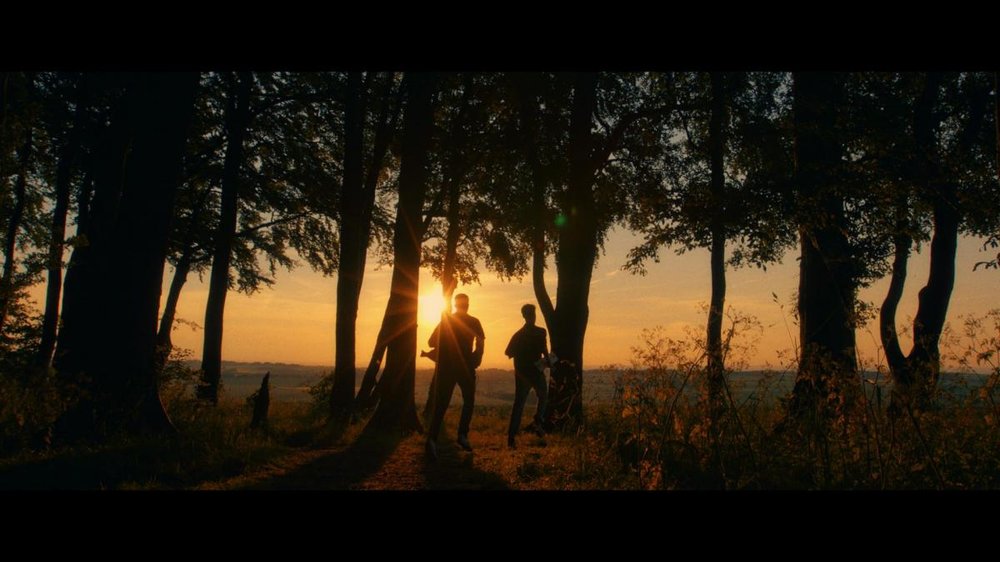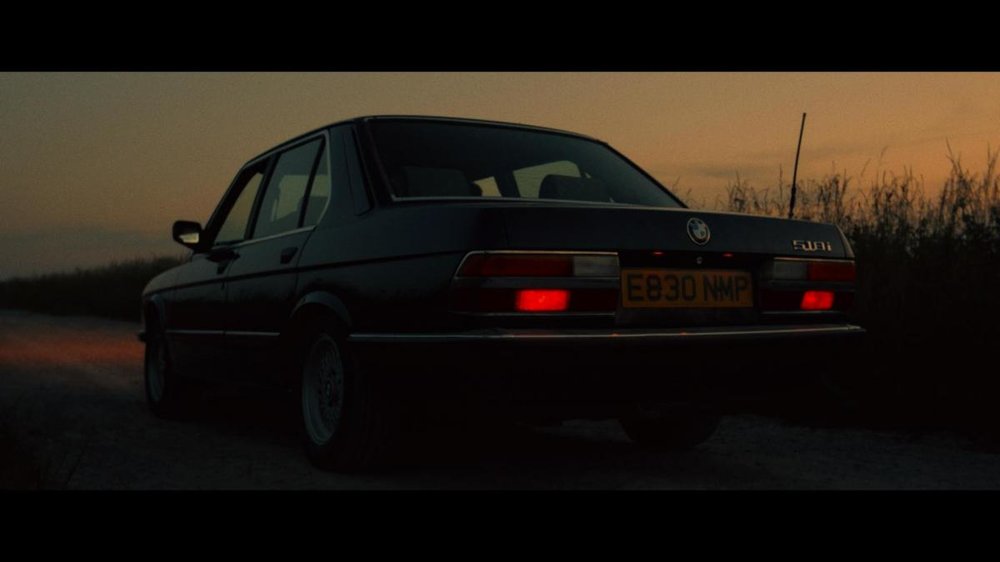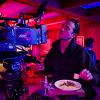Search the Community
Showing results for tags 'Cinematography'.
-

Directing and shooting as DP simualtaniously
Jaap Ruurd Feitsma posted a topic in General Discussion
Hi everyone, I am just wondering if there are any people out there who are both directing and filming (as cinematographer) their work. And if so, what type of projects are those (short films, documentaries, etc.)? And what is your reason to do so (e.g. budget, more creative freedom, etc.)? Please note that I am not asking for a specific reason, just kind of curious. Feel free to share some examples, could be fun! Kind regards, Jaap P.s. meant to write simultaneously in the topic :P -
Hi All, I'm shooting a TVC on Sony Venice next week, and have been looking for Sekonic / X-Rite exposure charts for S-log3.cine, preferably in both Native ISO's so that I can load the data into my Sekonic L758-Cine light meter. Does anyone have any good sources for this? Cheers, Lewis Jelley Cinematographer T: +44 (0)2920 251 255 M: +44 (0)7929 174 457 13 Mount Stuart Square, Cardiff, CF10 5EE http://stormandshelter.com Lewis Jelley Cinematographer T: +44 (0)2920 251 255 M: +44 (0)7929 174 457 13 Mount Stuart Square, Cardiff, CF10 5EE http://stormandshelter.com
-
What are some ways I can make the most out of my Canon C100 MKII? I've shot a few micro films on it, but I feel like I may not be using the camera to it's full potential. I watch test videos on Vimeo and they look incredible, but when I shoot I feel like I could get a way better image from my Nikon D3200.
- 8 replies
-
- Cinematography
- Digital
-
(and 1 more)
Tagged with:
-
Panavision, a world-class provider of state-of-the art optics, camera systems, lighting, filters, and post production services, will showcase an array of advancements in optics at their Lens Bar at EnergaCamerimage International Film Festival of Cinematography, which runs November 10-17 in Bydgoszcz, Poland. Panavision will also host a conversation with Camerimage Lifetime Achievement recipient Witold Sobocinski, PSC, and explore the benefits of an HDR workflow. Panavision’s workshops will be held on Nov. 13, beginning with the much-anticipated conversation with Sobocinski in the MCK at 11.00. The renowned cinematographer’s credits include “Frantic,” the Oscar®-nominated “The Promised Land,” “The Wedding,” and “O-Bi, O-Ba – The End of Civilization.” He will be joined by his grandsons Piotr Sobocinski Jr. (“Bogowie”) and Michal Sobocinski (“The Art of Loving”) who carry on the family’s cinematic legacy. At 14:00, Panavision will present “Cinematic Change: HDR for Cinematographers.” With 4K HDR as the viewing standard, Panavision experts will discuss how cinematographers can remain in control of their images throughout the workflow based on knowledge of the various post-production options. In the Opera Nova, Panavision’s popular Lens Bar will include demonstrations of the latest large-format and anamorphic lenses available, as well as previews of upcoming, innovative glass options: PanaSpeed – A large-format update of the classic Primo look. At T1.4, PanaSpeed are the fastest large-format lenses available today. T Series – A set of unique anamorphic glass that includes high contrast, well-balanced aberration control, excellent glare resistance, tightly controlled anamorphic squeeze ratio, and minimal breathing. H Series – A traditionally designed spherical lens set with a glamorous, rounded, soft roll-off, giving a pleasing tonal quality to the skin. Created with true vintage glass and coating, these lenses offer slightly elevated blacks for softer contrast. High speeds separate subject and background with a smooth edge transition, allowing subject to appear naturally placed within the depth of the image. Ultra Vista – Coming in 2019, this lens is a series of large-format anamorphic optics. Using a custom 1.6x squeeze, Ultra Vista covers the full height of the 8K sensor in the DXL and presents an ultra-widescreen 2.76:1 aspect ratio along with a classic elliptical bokeh and Panavision horizontal flare. Primo X - Also available in 2019, this lens will make its mark as the first cinema lens specially designed for use on drones and gimbals. They are fully sealed, weather proof, and counterbalanced to be aerodynamic, and able to easily maintain a proper center of gravity. Primo X lenses come in two primes – 14mm (T3.1) and 24mm (T1.6) – and one 24-70mm zoom (T2.8). Additionally, Panavision’s Millennium DXL2 8K camera will be on display for hands-on demonstrations. A premier, large-format imaging ecosystem, the DXL2 offers 16 stops of dynamic range with unmatched shadow detail, a native ISO setting of 1600, and 12-bit ProRes XQ up to 120 fps. At 10 pounds (4.5 kilos), it is the lightest large-format studio camera available, offering wireless controls, a directly editable workflow option (D2E), and Light Iron Color 2 (LiColor2), among other features. The DXL2 has become a top camera of choice for cinematographers and camera crews working on features, television, commercials and music videos. Panavision will also share the newly created DXL-M accessory kit, available in Q4 2018. Designed to work with RED Digital Cinema DSMC2 cameras, it delivers the popular features of the DXL to RED MONSTRO, GEMINI, and HELIUM sensors, such as the DXL menu system (via an app for the iPhone), LiColor2, motorized lenses, wireless timecode (ACN), and the Primo HDR viewfinder. Panavision LCND will make its European debut at Camerimage. The cinema’s first dynamically adjustable liquid crystal neutral density filter instantly adjusts up to six individual stops with a single click or ramp – a significant departure from traditional approaches to front-of-lens filters, which require carrying a set and manually swapping individual NDs based on changing light. LCND starts at 0.3 and goes through 0.6, 0.9, 1.2, 1.5, to 1.8. It is expected to be available in 2019. Panalux, a Panavision company, will also be set up in the Opera Nova providing demonstrations of a variety of lighting setups and formats made possible with a wide range of lighting equipment and control systems. Award-winning LEE Filters, also a Panavision company, will showcase their range of next-generation filters, including their latest products, the Zircon Filter range for LED control and the CineND, neutral density.
-
- cinematography
- 8K
-
(and 2 more)
Tagged with:
-
The American Society of Cinematographers (ASC) named the 2018 Student Heritage Award winners during a ceremony at the organization’s clubhouse in Hollywood on October 13. Three student filmmakers were honored for demonstrating exceptional abilities in cinematography based on their submitted work. The competition is designed to showcase rising talent and inspire the next generation of filmmakers. The 2018 winners are: ASC Sol Negrin Student Heritage Award – Graduate Category: Steven Breckon for A Place to Stay, American Film Institute (AFI) ASC Gerald Hirschfield Student Heritage Award – Undergraduate Category: Matthew Hayward for The Latent Image, Columbia College Chicago ASC Haskell Wexler Student Documentary Award: Alejandro Cortes Sanchez for Adrift, School of Visual Arts NYC A panel of ASC members judged the entries, and the winners were selected from 13 nominees. “The future of cinematography promises to be exciting, especially after seeing the level of work coming from this year’s submissions,” says ASC President Kees van Oostrum. “The skill and artistry of the next generation should be an inspiration to all of us who create and capture images every day.” The ASC Student Heritage Awards are unique, as they also celebrate the memory of revered cinematographers and are re-named for esteemed ASC members each year. Negrin was nominated for five Emmy Awards — three for his work on the detective drama Kojak, one for the telefilm The Last Tenant, and one for an episode of the series Baker’s Dozen. His cinematography in television commercials also earned four Clio Awards. Negrin received the ASC Presidents Award in 2010 in recognition of not only his expertise behind the camera, but for being an ambassador of the art and craft of cinematography. Hirschfeld was honored with the ASC Presidents Award in 2007. His reputation for being a precise, exacting perfectionist led to his first major feature assignment, shooting the Cold War drama Fail-Safe for director Sidney Lumet. He would go on to shoot some 40 feature films, including The Incident, Goodbye Columbus, Cotton Comes to Harlem, Diary of a Mad Housewife, Young Frankenstein, Two Minute Warning, The World’s Greatest Lover, The Bell Jar, Neighbors, My Favorite Year and To Be or Not to Be. Wexler began his career shooting documentaries and remained a passionate documentarian throughout his career. He earned an Academy Award® in 1966 for Who’s Afraid of Virginia Woolf? and a second Oscar® in 1976 for Bound for Glory. He also received nominations for One Flew Over the Cuckoo’s Nest (shared with Bill Butler, ASC), Matewan and Blaze. In 1969, Wexler wrote, directed and shot Medium Cool, which is studied by film students worldwide for its cinéma vérité style. In 1992, he was honored with the ASC Lifetime Achievement Award. Many ASC Student Heritage Award winners have gone on to have successful careers in filmmaking, and several have been invited to be ASC members themselves. For additional information about the ASC, visit www.theasc.com, and follow them on Instagram (@the_asc), or join American Cinematographer on Facebook, Twitter (@AmericanCine), and Instagram (@american_cinematographer). The 33rd Annual ASC Awards take place February 9, 2019. The student winners will be commemorated during the gala as well.
-
- asc
- asc awards
-
(and 2 more)
Tagged with:
-
Far From The Madding Crowd, directed by Thomas Vinterberg and photographed by Charlotte Bruus Christensen. IMDB http://www.imdb.com/title/tt2935476/?ref_=ttfc_fc_tt Trailer Synopsis In Victorian England, the independent and headstrong Bathsheba Everdene attracts three very different suitors: Gabriel Oak, a sheep farmer; Frank Troy, a reckless Sergeant; and William Boldwood, a prosperous and mature bachelor. I am going to let this post open because I need to be able to articulate a critic in a reasonable language rather than a critic full of WOWs and AMAZING. What I am going to say though is, if you like cinematography and photography, go and see it. Phil probably won't like it because of the "British hand - held indie camera work style" :P but it is very well done in this one and with a bit of analysis on the sequences. For me it has been one of those movies that open your mind and bring it to another level. More soon! Have a good day!
- 28 replies
-
- 1
-

-
- Charlotte Bruus Christensen
- Far From The Madding Crowd
- (and 4 more)
-
The American Society of Cinematographers (ASC) is now taking submissions for the television competition of its 33rd Annual ASC Awards for Outstanding Achievement in Cinematography. The event, which will also salute the organization’s 100th anniversary, takes place February 9, 2019, at the Ray Dolby Ballroom at Hollywood & Highland, and winners will be announced in all categories. Three categories comprise the TV awards: • Episode of a Television Series – Commercial (half hour and one hour) • Episode of a Television Series – Non-Commercial (half hour and one hour) • Motion Picture, Miniseries, or Pilot Made for TV The deadline to enter is November 5 by 5 p.m. (PT). To qualify, shows must have a premiere broadcast date in the United States between November 1, 2017, and October 31, 2018. Entry forms can be downloaded at here on the ASC website. In addition to the TV awards, the ASC gala in February will recognize the year’s best feature film cinematography, as well as lifetime honorees. For a complete timeline of the 33rd ASC Awards, visit this link.
-
- ASC
- ASC Awards
-
(and 3 more)
Tagged with:
-
Contenders for the American Society of Cinematographers (ASC) 2018 Student Heritage Awards have been unveiled today by the organization. Designed to inspire the next generation, the awards recognize graduate, undergraduate and documentary cinematography students for their exceptional work. The 13 nominees this year hail from 10 universities nationwide, and winners will be announced October 13. The ASC Student Heritage Awards also celebrate the memory of an exceptional cinematographer and are re-named each year in honor of esteemed ASC members. This year’s Undergraduate Award is named in honor of Gerald Hirschfeld, ASC and the Graduate Award honors Sol Negrin, ASC. The Documentary category is dedicated to Haskell Wexler, ASC. Finalists for this year’s student awards are: ASC Sol Negrin, ASC Student Heritage Award – Graduate Category: • Brody Anderson for Drawn Curtains, Chapman University – Dodge College • Steven Breckon for A Place to Stay, American Film Institute (AFI) • Andres Gallegos for Shoe Shiner, San Francisco State University • Yair Halper for Sauna, American Film Institute (AFI) • Heyjin Jun for Difficult People, University of Southern California (USC) School of Cinematic Arts ASC Gerald Hirschfield, ASC Student Heritage Award – Undergraduate Category: • Jack Craymer for Sonora, Chapman University – Dodge College • Matthew Hayward for The Latent Image, Columbia College Chicago • Grace Marrero for The Girl and the Bird, Florida State University (FSU) College of Motion Picture Arts • Simms Wright for Sodium Vapor Nights, University of North Carolina (UNC) School of the Arts ASC Haskell Wexler Student Documentary Award: • Alejandro Cortes Sanchez for Adrift, School of Visual Arts NYC • Rachel Lattin for Monumental, Chapman University – Dodge College • Minagi Tanaka for She Comes at Night, State University of New York at New Paltz • Xinzhong Zhao for Francis Ford Coppola’s Live Cinema, University of California Los Angeles (UCLA) Negrin was nominated for five Emmy Awards — three for his work on the detective drama Kojak, one for the telefilm The Last Tenant, and one for an episode of the series Baker’s Dozen. His cinematography in television commercials also earned four Clio Awards. Negrin received the ASC Presidents Award in 2010 in recognition of not only his expertise behind the camera, but for being an ambassador of the art and craft of cinematography. In 2007, Hirschfeld was honored with the ASC Presidents Award. His reputation for being a precise, exacting perfectionist led to his first major feature assignment, shooting the Cold War drama Fail-Safe for director Sidney Lumet. He would go on to shoot some 40 feature films, including The Incident, Goodbye Columbus, Cotton Comes to Harlem, Diary of a Mad Housewife, Young Frankenstein, Two Minute Warning, The World’s Greatest Lover, The Bell Jar, Neighbors, My Favorite Year and To Be or Not to Be. Wexler began his career shooting documentaries and remained a passionate documentarian throughout his career. He earned an Academy Award® in 1966 for Who’s Afraid of Virginia Woolf? and a second Oscar® in 1976 for Bound for Glory. He also received nominations for One Flew Over the Cuckoo’s Nest (shared with Bill Butler, ASC), Matewan and Blaze. In 1969, Wexler wrote, directed and shot Medium Cool, which is studied by film students worldwide for its cinéma vérité style. In 1992, he was honored with the ASC Lifetime Achievement Award. Many ASC Student Heritage Award winners have gone on to have successful careers in filmmaking, and several have been invited to be ASC members themselves. For additional information about the ASC, visit www.theasc.com, and follow them on Instagram (@the_asc), or join American Cinematographer on Facebook, Twitter (@AmericanCine), and Instagram (@american_cineamtographer).
-
- ASC
- Cinematography
-
(and 4 more)
Tagged with:
-
Hello All! New to this forum so I'm not sure if this is the right section to post this. We will be doing a documentary for a philanthropic women's group. This documentary will be highlighting women who have overcome obstacles and have risen to the top. We are wanting to do a POV scene where someone is looking up at a glass roof from the lobby of an office building and they rise straight up and crash through the glass ceiling. We are thinking a scale model might work as we are not set up to do CGI in the detail they will want. Not sure if this is the right approach. Any ideas how to pull off this shot would be appreciated.
- 10 replies
-
- Documentary
- Cinematography
-
(and 2 more)
Tagged with:
-
RED Digital Cinema will showcase its DSMC2™ camera line-up at IBC in Amsterdam from September 14 - 17. Located in Hall 13, Elicium Tower, 4th Floor, RED will feature its DSMC2 camera brain with three sensor options – MONSTRO 8K VV, HELIUM 8K S35 and GEMINI 5K S35. Additionally, RED will demonstrate an 8K workflow, covering 8K REDCODE RAW, HDR, and its enhanced image processing pipeline (IPP2). RED experts will be available to answer questions and offer insight into the possibilities for efficiently producing 8K projects. The DSMC2 camera BRAIN includes high-end frame rates and data rates regardless of the sensor chosen. RED’s modular camera system allows a shooter to configure a fully operational camera setup to meet their individual needs. RED offers a range of accessories including display and control functionality, input/output modules, mounting equipment, and methods of powering the camera. The DSMC2 camera is capable of up to 60 frames per second at 8K, offers 300 MB/s data transfer speeds, and simultaneous recording of REDCODE® RAW and Apple ProRes or Avid DNxHD/HR. The flexibility of RED’s modular camera designs with accompanying accessories and integration solutions can also be seen on the show floor through a variety of manufacturers, including Sigma, Cooke, Zeiss, Angenieux, Schneider Optics, Teradek, CoreSWX, Fujifilm and Motion Impossible. Projects shot on RED include the upcoming Voyage of Dr. Doolittle (Guillermo Navarro, ASC), A Million Little Pieces (Jeff Cronenweth, ASC), Maleficent 2 (Henry Braham, BSC), and King of Thieves (Danny Cohen, BSC), among many other productions, including Eighth Grade (Andrew Wehde), Mindhunter (Erik Messerschmidt), Stranger Things (Tim Ives), Godless (Steven Meizler), GLOW (Christian Sprenger), and House of Cards (David M. Dunlap), to name a few.
-
- RED
- RED Digital Cinema
-
(and 3 more)
Tagged with:
-
Hi! I wanted to start a series of posts where I could keep track of what is going to University to study film studies or cinematography. Not so many years ago when I was struggling to understand the little words I knew in English I found this forums and I started reading (with a dictionary) every single thing I could. Thanks to the knowledge of a lot of people who were and are on this website I got better as a camera intern and then as a second assistant camera so I hope this post and consecutive posts that I am thinking about writing will help people in the future when they think about: "Should I go to a film school or not?" because they will see all the process that took me from being a non - student to a full time student. So, a little bit about me! As of today, October 6th, 2014, I'm a 33 years old Spanish second camera assistant who left Spain in 2010 after spending a lot of years working on American commercials, American movies, English movies and second units of different things. At that time I was starting to shoot short - films as a cinematographer and probably, hadn't I left Spain, I would be shooting commercials now as a cinematographer.. with very bad quality. The reason why I left Spain is because I wanted to improve my English (which in a 0 to 10 scale was 1) in order to go to study a Cinematography masters in AFI in L.A.. and I almost got there! I applied to AFI for the 2012 / 2013 cinematography course and as they were asking for a minimum of 100 in the TOEFL exam I couldn't get in because my score was 99, yeah! 1 point, but their rules are their rules :) and although I had the recommendations, the support of the Fulbright Scholarship and some other things, they said no. And I'm super happy I didn't get there because I started working for Apple in Cork (Ireland) and I discovered that "the office environment" was kind of interesting (and Apple was paying really really really well for the job I was doing). Also I started to focus a bit more on still photography, which is something I adore and love, and I found out that the more I was shooting, the more I was going towards darkness and colours. But I was missing something while working at Apple and it was the set life :) so I decided to start shooting short - films in Ireland.. and by doing that, I knew that I couldn't work in Apple anymore because I needed to follow my passion, cinematography. While trying to decide what to do I came across the National Film School in Ireland, home to cinematographers like Robbie Ryan, James Maher (member of the forum if I don't remember badly), Piers Mc Grail and so many other interesting ones. I went to the open day and what I saw was a place where I could spend time to create and learn things that I wanted, something that you miss when you are working full time, either in movies or Amazon or Apple.. sure you see loads of lighting setups while working on sets but if you are a 2nd AC, you better be focused on your job unless you don't want to work anymore. So, this National Film School was offering a 4 years Bachelors Degree (Honours) in Film & Production, being the 4th year the one where people choose a specialization. Probably the same kind of course as it is offered in America, Europe and etc so nothing fancy! And I said: Ok! If I can get in 4th year that would be awesome! I will spend 1 year doing what I love, learning things that I don't know, polishing my skills and they will give me a Bachelors Degree even! Plus they got two Alexas and a super new big studio! The decision wasn't that easy, although I had no commitments in life at the moment (no mortgage, no children, nothing at all) the money that I was getting from Apple was a very serious thing and you all know how the world spins! However, after a lot of months of thinking about it I decided to quit my job at Apple and become a student of the university (which accepted me with no problems) because I knew that I needed to pursue my dream. My reasons to go to uni were the following ones: - In University you have all the equipment you need to learn the craft. - You learn! I can't write it any bigger but it is an important point, you learn! - You also make friends and get to shoot a lot so you can try things that you couldn't try in a working environment when money is involved. - You also experiment with film / video if you want to. - You will be focused on YOU and that's THE POINT because nobody else is going to teach you what you don't know that you don't know! - They will teach you how to find your voice and apply it in different projects. - My uni is absolutely empty in the evening (something that I don't understand tho) and our classes have 2K projectors, dolby sound system and a big screen so from 6 to 8.30 I watch and analyze movies when I'm not shooting. - I have access to lecturers to talk about things that I can't talk about with anybody else (like the cinematography of Dersu Uzala for example!) and their point of views are always interesting even if they are not the same as mine. - I have to write a thesis!!!! something that I haven't done ever (it's my very first time in Uni). I find the process absolutely beautiful because I'm learning a lot about things that I didn't know. - In some unis or schools you have super top lecturers and that is fantastic! you can learn from them a lot! Some other unis don't have those lecturers but still they have very good teachers and they can address things that you hadn't thought about on your own. - If you go to AFI or NFTS you probably will end up as a top cinematographer / director / scriptwriter shooting commercials, features and such. While other unis won't give you that visibility you choose what you want to get out of uni and if you are passionate, driven about what you do, you should get the most out of your school! - Usually, Film schools have a sort of grading suite that you can use, so learn how to grade and use it! - You will have a library with a lot of books and you can wander around the shelves looking for Film Lighting by Malkiewicz and end up with a book with photos of the architecture of Tadao Ando! You won't have that at home because we search for what we know that we need and Google won't give you results on other things if you are looking for Film Lighting. - You will get a degree at the end of it and then you can choose to go for a Masters on any other thing vaguely related if you want to. - I really know that I won't become a cinematographer ever, and it doesn't bother me at all at all, I'm doing it because I needed to do it. My goal is to become a cinematographer, a good one with something interesting and different to say, but if I don't get there, I won't regret it because I will have done the trip :) I can only say: Go to film school!!! even if it is not one of the top ones, because it will give you a lot of knowledge (cinema wise) and you will find there if cinema is what you want to do for the rest of your life or you better get something else. And probably, if you are reading this and still are in your early 20s.. go go go! finish it and then try getting a degree in something else that you might like or is related (communications, marketing, advertisement..) because that will give you a backup plan in case your filmmaking career doesn't go as planned. Or you can go to the backup plan course first and then going to film school :) it doesn't matter! Learning is always great great fun and playing and toying around with cameras is even better. I will be posting how uni goes on here and what I learn as the weeks fade. Last week we had the first cinematography class, in a black studio with nothing else, just a monitor and the black curtains). Everybody was not very interested in the lecture and the testings we were running and were out of the class smoking or chatting, so I asked for a couple of 1K and asked for permission to play with them during the lunch break... and the image below is what I got. What I really miss is a light in the background to create colour contrast and if I could ask for something else.. what about a window to create a sense of darkness outside with a cyanish night or a green steelish night or even orange!? :D I will be shooting the image above with the Alexa very soon and we will see what I get!!! :) If you have gotten here, congratulations! :D I hope it solved some of your questions! :) and if you want to post some of your thoughts, you're more than welcome! :) Best!
- 70 replies
-
- Cinematography
- University
-
(and 1 more)
Tagged with:
-
Hello Cinematography lovers! I hope you're all well! I recently shot a music promo using all natural and golden hour light! Filmed on location in the UK, where normally it's not like this! Hope you enjoy & thanks for watching!
-
I wanted to add my new book as an option alongside the classics from Blain Brown, Harry Box, and John Jackman. Shaping Light for Video in the Age of LEDs; a practical guide to art, craft, and business of lighting. By Alan Steinheimer. 2018. Available now at Amazon and B&N websites. Shaping Light ... is a practical, hands-on guide to lighting for video. Using a Dummies-style approach, the book explains lighting techniques through real-world examples, including recent updates on the groundbreaking use of LED lighting and wireless control options. This book focuses on firsthand application of technical knowledge, to appeal to cinematography students and video freelancers. Beginning with simple lighting setups and progressing to more complicated scenarios, the book holds the reader’s attention with illustrative anecdotes, and links theory to real-world applications. There is a 30 page glossary/set vocabulary at the end that would be useful to most newbies. The e-book is coming as well as peering into the first 16 pages at Amazon.
- 1 reply
-
- Cinematography
- lighting
- (and 8 more)
-
Panavision, the entertainment industry’s leading designer, manufacturer and rental provider of high-precision optics and camera systems, has named Zoe Iltsopoulos Borys to lead the company’s Atlanta office as vice president and general manager. Borys will oversee day-to-day operations in the region, and ensure Panavision’s customers continue to receive the highest level of service to support their production needs. “Zoe is a respected partner to the cinematic community and we are pleased to have her on the team at Panavision,” said Michael George, Panavision’s chief operating officer. “Her understanding and familiarity with the needs of our customers will be an invaluable addition to our presence in the region. Filmmakers can be confident that they will continue to receive our superior service, along with our innovative Panavised camera systems and premier lenses.” Borys’ 25 years of experience in the motion picture industry includes business development for Production Resources Group (PRG), and general manager for Fletcher Camera and Lenses (now VER). This is her second turn at Panavision, having served in a marketing role at the company from 1998-2006. Throughout her career, she has been responsible for bringing innovative technology to the creative community, empowering them to bring their vision to the screen. She is also an associate member of the American Society of Cinematographers. Panavision’s Atlanta facilities, located in West Midtown and at Pinewood Studios, are the largest suppliers of camera rental equipment in the southern U.S., with a full staff of prep technicians and camera service experts. The Atlanta team has provided equipment and services to productions such as Avengers: Infinity War, Black Panther, Guardians of the Galaxy: Vol. 2, The Immortal Life of Henrietta Lacks, Baby Driver, and Pitch Perfect 3, among others.
-
- Panavision
- Cinematography
-
(and 1 more)
Tagged with:
-
The American Society of Cinematographers (ASC) has re-elected Kees van Oostrum as president. Van Oostrum will serve his third consecutive term. The ASC Board also named its roster of officers for 2018-2019, including Bill Bennett, John Simmons and Cynthia Pusheck as vice presidents; Levie Isaacks as treasurer; David Darby as secretary; and Isidore Mankofsky as sergeant-at-arms. “During this past year at the ASC, we have been steadfastly focused on educational events, international outreach, and efforts to promote diversity and inclusion,” notes van Oostrum. “These all support our mission of loyalty, progress and artistry. As we look ahead, we plan to usher in the 100th anniversary of the ASC in a way that commemorates our heritage and positions our members to maintain a leadership role in the evolution of the art and craft of image making.” Van Oostrum initiated and chairs the ASC Master Class program, which has expanded to locations worldwide under his presidency. The Master Classes take place several times a year and are taught exclusively by ASC members. It is designed for cinematographers with an intermediate-to-advanced skill set, and incorporates practical, hands-on demonstrations of lighting and camera techniques with essential instruction in current workflow practices. The ASC Vision Committee, founded during van Oostrum’s first term, continues to organize successful symposiums that encourage diversity and inclusion on camera crews, and also offers networking opportunities. The most recent was a standing-room-only event that explored practical and progressive ideas for changing the face of the industry. The Society will continue to host more of these activities during the coming years. Van Oostrum has earned two Primetime Emmy® nominations for his work on the telefilms Miss Rose White and Return to Lonesome Dove. His peers chose the latter for a 1994 ASC Outstanding Achievement Award. Additional ASC Award nominations for his television credits came for The Burden of Proof, Medusa’s Child, and Spartacus. He also shot the Emmy®-winning documentary The Last Chance. A native of Amsterdam, van Oostrum studied at the Dutch Film Academy with an emphasis on both cinematography and directing, and went on to earn a scholarship sponsored by the Dutch government, which enabled him to enroll the American Film Institute (AFI). Van Oostrum broke into the industry shooting television documentaries for several years. He has subsequently compiled a wide range of some 80-plus credits, including movies for television and the cinema, such as Gettysburg and Gods and Generals, and occasional documentaries. He recently wrapped the final season of TV series The Fosters. The 2018-2019 Board who voted in this election include: John Bailey, Paul Cameron, Russell Carpenter, Curtis Clark, Dean Cundey, George Spiro Dibie, Stephen Lighthill, Lowell Peterson, Roberto Schaefer, John Toll, and Amelia Vincent. Alternate Board members are Karl-Walter Lindenlaub, Stephen Burum, David Darby, Charlie Lieberman, and Eric Steelberg. The ASC has over 20 committees driving the organization’s initiatives, such as the award-winning Motion Imaging Technology Council (MITC), and the Educational and Outreach committee. For additional information about the ASC, visit www.theasc.com.
-
Panavision’s Millennium DXL2 8K camera makes its Cine Gear Expo debut on June 1-2 at The Studios at Paramount in Los Angeles. The premier, large-format camera with a new post-centric firmware upgrade will be showcased at the Panavision booth (#S102) in Stage 17, along with four new large-format lens sets, a DXL-inspired accessories kit for RED DSMC2 cameras, and a preview of custom advancements in filter technology. “Millennium DXL2 is the cornerstone of an ever-evolving ecosystem that is designed to improve creative control across every department,” says Michael Cioni, senior vice president of Innovation at Panavision and Light Iron. “By combining the company’s expertise in optics, filters, color science, and post production with strategic partner integrations, we are able to offer filmmakers an entirely fresh image and workflow that is only available within DXL’s ecosystem.” DXL2 incorporates technological advancements based on professional input from acclaimed cinematographers, camera assistants, and post production groups. The camera offers 16 stops of dynamic range with unmatched shadow detail, a native ISO setting of 1600, and 12-bit ProRes XQ up to 120fps. New to the DXL2 is version 1.0 of a directly editable (D2E) workflow. D2E gives DITs wireless LUT and CDL look control and records all color metadata into camera-generated proxy files for instant and render-free dailies. DXL2, which is available to rent worldwide, also incorporates an updated color profile, Light Iron Color 2 (LiColor2). This latest color science provides cinematographers and DITs with a film-inspired tonal look that makes the DXL2 feel more cinematic and less digital. Panavision, renowned for its full line of top-quality optics, will also showcase the company’s large-format spherical and anamorphic lenses. Four new large-format lens sets will be on display, giving Expo attendees the unique opportunity to preview upcoming, innovative glass options: Primo X is the first cinema lens specially designed for use on drones and gimbals. They are fully sealed, weather proof, and counterbalanced to be aerodynamic, and able to easily maintain a proper center of gravity. Primo X lenses come in two primes – 14mm (T3.1) and 24mm (T1.6) – and one 24-70mm zoom (T2.8). Available in 2019. H Series is a traditionally designed spherical lens set with a glamorous, rounded, soft roll-off, giving a pleasing tonal quality to the skin. Created with true vintage glass and coating, these lenses offer slightly elevated blacks for softer contrast. High speeds separate subject and background with a smooth edge transition, allowing subject to appear naturally placed within the depth of the image. Available now. PanaSpeed is a large-format update of the classic Primo look. At T1.4, PanaSpeed will be the fastest large-format lens option available on the market. Available in Q3 2018. Ultra Vista is a series of large-format anamorphic optics. Using a custom 1.6x squeeze, Ultra Vista covers the full height of the 8K sensor in the DXL and presents an ultra-widescreen 2.76:1 aspect ratio along with a classic elliptical bokeh and Panavision horizontal flare. Available in 2019. Panavision will also be unveiling cinema’s first dynamically adjustable liquid crystal neutral density (LCND) filter. LCND instantly adjusts up to six individual stops with a single click or ramp – a significant departure from traditional approaches to front-of-lens filters, which require carrying a set and manually swapping individual NDs based on changing light. LCND starts at 0.3 and goes through 0.6, 0.9, 1.2, 1.5, to 1.8. Available in 2019. Following up on the success of DXL1 and DXL2, Panavision is launching the latest in its cinema line-up by showcasing the newly created DXL-M accessory kit. Designed to work with RED DSMC2 cameras, DXL-M marries the quality and performance of DXL with the smaller size and weight of the DSMC2. DXL-M brings popular features of DXL to RED MONSTRO, GEMINI, and HELIUM sensors, such as the DXL menu system (via an app for the iPhone), LiColor2, motorized lenses, wireless timecode (ACN), and the Primo HDR viewfinder. Available in Q4 2018. Light Iron and LEE Filters can also be found at the Panavision booth.
-
- Panavision
- Cinematography
-
(and 3 more)
Tagged with:
-
RED Digital Cinema will be at Cine Gear Expo this year in Los Angeles at The Studios at Paramount from June 1-2. Located at Booth S101 in Stage 17, RED will showcase its DSMC2™ camera line-up featuring its premier sensors, MONSTRO 8K VV, HELIUM 8K S35 and GEMINI 5K S35. Additionally, RED will demonstrate 8K workflow, covering 8K REDCODE RAW, HDR and image processing pipeline (IPP2). RED will also be taking attendees behind the scenes on Christopher Probst, ASC’s new short film, Epoch. On June 1 at 12:45pm and June 2 at 11:45am, Probst will break down his approach to shooting the short film, set in a post-apocalyptic world of harsh, dusty exteriors and dark desolate nights. Probst and director Rich Lee relied on the sensor qualities of the RED MONSTRO to deliver a visually compelling 13-minute narrative finished in 4K. Both sessions will take place in the Sherry Lansing Theater on the Paramount lot. For more information, visit http://www.red.com/cinegear-2018.
-
- RED Digital Cinema
- RED
-
(and 2 more)
Tagged with:
-
RED Digital Cinema is advancing its product portfolio of high-quality cameras and sensors with a focus on simplicity, price and quality for customers. Beginning today, RED’s camera line-up will be modified to include one DSMC2 camera BRAIN with three sensor options - MONSTRO 8K VV, HELIUM 8K S35 and GEMINI 5K S35. The single DSMC2 camera BRAIN includes high-end frame rates and data rates regardless of the sensor chosen and, in addition to this new value, the streamlined approach will result in a price reduction compared to RED’s previous camera line-up. “RED was founded with the desire to democratize the digital cinema camera industry by making trailblazing technology accessible to shooters everywhere,” said Jarred Land, President of RED Digital Cinema. “And that mission has never changed. With that in mind, we have been working tirelessly to become more efficient, as well as align with strategic manufacturing partners to optimize our supply chain. As a result, today I am happy to announce a simplification of our lineup with a single DSMC2 brain with multiple sensor options, as well as an overall reduction on our pricing.” RED’s DSMC2 camera BRAIN is a modular system that allows a shooter to configure a fully operational camera setup to meet their individual needs. RED offers a range of accessories including display and control functionality, Input/Output modules, mounting equipment, and methods of powering the camera. The DSMC2 camera BRAIN is capable of up to 60 frames per second at 8K, offers 300 MB/s data transfer speeds and simultaneous recording of REDCODE® RAW and Apple ProRes or Avid DNxHD/HR. The RED DSMC2 camera BRAIN paired with each of RED’s sensor options provides the ultimate blend of flexibility and performance. · DSMC2 with MONSTRO 8K VV offers cinematic full frame lens coverage, produces ultra-detailed 35.4 megapixel stills, and delivers 17+ stops of dynamic range for $54,500. · DSMC2 with HELIUM 8K S35 is the recipient of the highest DxO score ever, delivers 16.5+ stops of dynamic range in a Super 35 frame, and is available now for $24,500. · DSMC2 with GEMINI 5K S35 leverages dual sensitivity modes to provide creators with greater flexibility using standard mode for well-lit conditions or low light mode for darker environments priced at $19,500. RED will begin to phase out offering new sales of its EPIC-W and WEAPON camera BRAINs immediately. In addition to the changes to the camera line-up, RED will also begin offering new upgrade paths for customers looking to move from older RED camera systems or from one sensor to another. The full range of upgrade options can be found here. “We would not be where we are today without the continued support of our customers,” continues Land. “And after having many conversations with a wide range of those customers, now is also the perfect time to announce our latest loyalty programs to give them the opportunity to upgrade to the latest RED technology."
-
- RED Digital Cinema
- RED
-
(and 3 more)
Tagged with:
-
Hi all, I'm looking to shoot a short film on 16mm in the near future, and was hoping for some recommendations of cameras to look into. Bearing in mind that I have to consider other aspects of the shoot, including lenses, I'm willing to pay around £1000. Some features I'm looking for are: Consistency in registration - one thing I've learned from watching various tests is that the results of a given film stock can range from professional to unusable depending on the precision of camera movements. Sync sound - I'm not worried about the volume of the camera itself, since I'll most likely dub dialogue after filming, but I was hoping to use a simple field recorder on set to make the dubbing process easier. Obviously this won't work if there is too much frame rate deviation. Ability to hand hold/shoulder mount. Ease of maintenance - considering that I'll be investing quite a bit of time and money into this project, I'd like to have any second hand gear checked over by a technician without too much cost/hassle. So far, the Eclair NPR is looking like the best bet, but I'd appreciate any other suggestions.
- 16 replies
-
A small selection of narrative films I've written, directed and filmed over the years.
- 2 replies
-
- 1
-

-
- filmmaking
- indiefilm
-
(and 1 more)
Tagged with:
-
Hi all, sorry if this has already been answered in other threads, this is my first post here. Due to financial constraints, i won't be able to buy more dedicated cinema lights until next month. I have 4 clamp lamps with daylight LED lightbulbs. If I get more of these, will I be able to light scenes decently? How can I create different atmospheres with these? And are there larger, brighter bulbs I can get for them? I understand fully that lighting is one of the most important aspects of filmmaking, but for the time being, I don't want to sit on my ass and do nothing when I can be refining my skills.
-
Hi all! I'm interested in pairing the Zeiss CP2 lenses with the Arriflex SR1. Will the flange depth on the CP2s be a able to work with the SR? Is it possible to pair these two? Thank you!
- 1 reply
-
- cinematography
- arriflex
- (and 7 more)
-
Hey everyone, I've been looking for a solid, hands-on introductory class for a while now and I'm looking for some advice, recommendations, tips, things to look (out) for. The program should give me a foundation on which I can build for the coming years. I want to learn the tools and craft, not how to use a particular camera. I've found three solid options so far, and they are: 1- Maine Media Workshops (Maine, USA): 10 week intensive cinematography workshop. PROS: Asked around and this program is definitely solid with some world class instructors. CONS: Extremely expensive. (16k) 2- Global Institute (LA, USA): The foundational programs. PROS: World class program and instructors, located in L.A. CONS: Asked a friend, apparently even the foundational programs are a bit too advanced for someone who's never worked in the camera department. Pretty expensive (expensive at about 10k for a bunch of classes). 3- Afilms (Barcelona, Spain): 3 month Feature Film Cinematography. PROS: Solid program, but not as good as the other two though significantly cheaper. CONS: Starts in a year, that's in quite a long time. I feel like doing this in a couple of months. I don't mind studying anywhere in the world, as long as I can justify it to myself. The class should be technical. I've been curating and improving my eyes for a while now and I'm pretty familiar with filmmaking at many levels, but I want to demystify light (or at least start the process), as I feel it will benefit me greatly as a director. I also feel like shaping light, so being able to DP my own little projects, explore studio photography etc. is something I'm interested in. I'm not under the illusion that I will become a DP after this workshop, I just want to be able to think like one at a basic level, so I can improve myself in the future. Director's showreel if anyone's curious. Thanks in advance.
- 1 reply
-
- advice
- cinematography
-
(and 2 more)
Tagged with:
-
G'day everyone, So, I compared some stuff and wrote a thing: http://dreamsmiths.com.au/blog/why-bigger-is-better-but-not-much-else If you're interested in the objective differences of large format cinematography to regular S35mm images, you might find it worthwhile. It's a quick test comparing regular S35mm Alexa, matched for both field of view and depth of field against the shiny new Vistavision-sized sensor of the Alexa LF, using spherical lenses. If you click through to the vimeo link, you can download the full 4.4k ProResHQ file in all its glory, which I'd highly recommend pulling into a piece of grading software to look at up close. The test certainly helped clarify a few things for me. Cheers, Mark
- 3 replies
-
- large format
- alexa
-
(and 5 more)
Tagged with:
-
Hey everyone! Wanted to open up a discussion of the subliminal effects on an audience/contrasted moods that are conveyed in a push in versus a pull out. I've been thinking a lot about them lately, and of course there's the typical application of these shots opening/ending scenes in a very traditional matter. What does everyone think about these shots from a mood building and emotional point of view?
- 2 replies
-
- cinematography
- movement
- (and 7 more)











